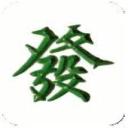Yahoo Answers is shutting down on May 4th, 2021 (Eastern Time) and beginning April 20th, 2021 (Eastern Time) the Yahoo Answers website will be in read-only mode. There will be no changes to other Yahoo properties or services, or your Yahoo account. You can find more information about the Yahoo Answers shutdown and how to download your data on this help page.
Trending News
4 Answers
- PythagorasLv 75 years ago
The domain are all of the x's you could put into the expression.
Since any number you put into this expression will give you an answer, the domain is all real numbers.
(If that doesn't make sense, I can give you examples of expressions that do not give you an answer under comments if you ask.)
The range are all of the answers you can get from this expression.
Notice that you have x^2 in your expression.
Any number you put into x^2 will give you a positive number (since any number squared is positive) or 0 (if you put in 0).
Therefore, since x^2 = 0 is the smallest answer you can get for this part, when you add 1 to x^2, the smallest answer you can get is 1. Therefore, the range is y is greater than or equal to 1.
If you go to desmos.com and type in the equation, you will see what I am talking about. The graph never goes below 1.
- SqdancefanLv 75 years ago
As with any polynomial, the domain is (-∞, ∞).
The degree is even, and the coefficient of the highest degree term is positive, so the expression is U-shaped and opens upward. It will have a minimum value. Here, it is where x=0, and that minimum value is 1. The range is [1, ∞).
- ?Lv 75 years ago
Your phrase erroneously followed by two question marks: "Domain and range of 1+x²??"
If you had meant to ask a question, the answer would be:
Domain = all Real numbers
"In mathematics, and more specifically in naive set theory, the domain of definition (or simply the domain) of a function is the set of "input" or argument values for which the function is defined. That is, the function provides an "output" or value for each member of the domain. Conversely, the set of values the function takes on as output is termed the image of the function, which is sometimes also referred to as the range of the function."
• https://en.wikipedia.org/wiki/Domain_of_a_function
Range = all Real numbers greater than or equal to one.
"In mathematics, and more specifically in naive set theory, the range of a function refers to either the codomain or the image of the function, depending upon usage. Modern usage almost always uses range to mean image. The codomain of a function is some arbitrary set. In real analysis, it is the real numbers. In complex analysis, it is the complex numbers. The image of a function is the set of all outputs of the function. The image is always a subset of the codomain."
• https://en.wikipedia.org/wiki/Range_(mathematics)
____________________________________________
"In everyday speech, a phrase may be any group of words, often carrying a special idiomatic meaning; in this sense it is roughly synonymous with expression. In linguistic analysis, a phrase is a group of words (or possibly a single word) that functions as a constituent in the syntax of a sentence, a single unit within a grammatical hierarchy. A phrase appears within a clause, but it is possible also for a phrase to be a clause or to contain a clause within it."
• https://en.wikipedia.org/wiki/Phrase
"A question is a linguistic expression used to make a request for information, or the request made using such an expression. The information requested is provided in the form of an answer."
"There are these four ways of answering questions. Which four? There are questions that should be answered categorically [straightforwardly yes, no, this, that]. There are questions that should be answered with an analytical (qualified) answer [defining or redefining the terms]. There are questions that should be answered with a counter-question. There are questions that should be put aside. These are the four ways of answering questions."
— Buddha, Sutta Pitaka
• https://en.wikipedia.org/wiki/Question
"The question mark [ ? ] (also known as interrogation point, query, or eroteme in journalism) is a punctuation mark that indicates an interrogative clause or phrase in many languages. The question mark is not used for indirect questions. The question mark glyph is also often used in place of missing or unknown data."
• https://en.wikipedia.org/wiki/Question_mark
"English Grammar | LearnEnglish | British Council | question forms"
- Dragon.JadeLv 75 years ago
For your information, Yahoo Answers automatically adds a question mark at the end of any title... So if the asker puts a question mark, there will be two of them showing.






